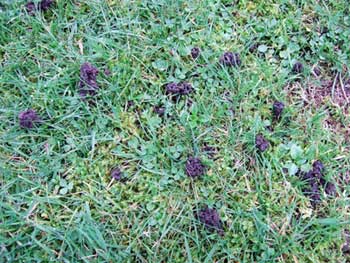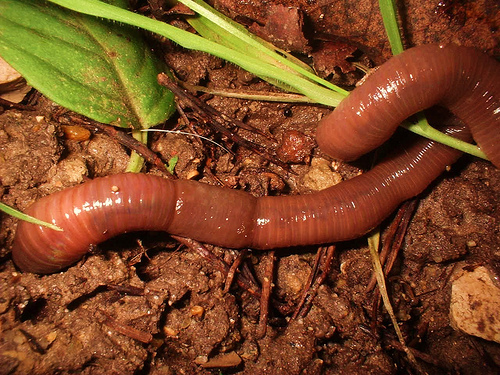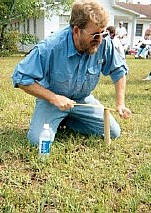Bumpy Lawn?
Bumpy Lawn?
I remember when I was newly married and we were renting a little old house with a small lawn. It was the first home where we had a lawn to mow, and I was quite excited. (My how times change!) Anyway, the front lawn was okay, but the back lawn was so bumpy it was all I could do to push the lawnmower over it.
We soon moved from that house and our next home was new and we planted a new lawn. We never had a problem. Then we moved into an old farmhouse with an old, old lawn. Again, we had a super bumpy lawn. The lawn was terrible, not only bumpy, but weedy and just plain ugly. So after a few years we tore it all out and started over. Our lawn was beautiful, but after a few years became bumpy again, although not as bad as before.
I discovered that it was night crawlers (a type of large earthworm) that was causing the problem. Night crawlers burrow underground and feed on organic matter near the soil surface. They excrete their fecal matter, or castings, in mounds on the soil surface, creating the “bumps”. Researchers estimate that earthworms carry 20 to 25 tons of soil per acre up to the surface each year! The worm castings are great for your lawn. They contain readily available plant food. The burrowing of the night crawlers also improves the soil’s drainage, aeration, and structure, as well as decomposing thatch and stimulating microbial activity.
However, high populations of night crawlers can produce so many mounds that the lawn becomes bumpy. Use a rake to scatter the castings across the lawn. Applying sulfur to your lawn will reduce the soil pH and make it less favorable for night crawlers. You can reduce the lumps somewhat by soaking the lawn real well, gathering the worms, and renting a lawn roller and rolling the bumps out of the lawn.
To gather night crawlers soak an area of lawn and place plywood or a thick layer of newspaper over the spot and in the morning they’ll be at the surface. Or just go out at night, after watering or a good hard rain. Most of the crawlers are right on top and easy to grab. A flashlight (with a coffee filter over the head to dull the light) and a coffee can are all you need. (Great job for the kids!) You won’t have much luck this time of year, though. The worms are too deep. But as the soil warms they will come closer to the surface.
You used to be able to buy a product called “Crawler Caller” that you would dilute in water, pour on the lawn and the worms would come shooting to the surface. However I don’t think it is available anymore. But you can do the same thing using Clorox or Dawn dish liquid. All you need is moist ground, Dawn dish soap, a 5 gallon bucket, and water. Fill the bucket with water and add about 1/4 cup of Dawn dish soap. Stir gently to avoid suds. Pour this over an area of bumpy grass. The worms will wiggle their way to the surface within minutes. If you want to save the worms for fishing, just rinse them in a bucket of clean water and place them in your worm bedding.
Here’s another method of gathering night crawlers I learned from Wikipedia: “Worm charming, worm grunting, and worm fiddling are methods of attracting earthworms from the ground. The activity is usually performed to collect bait for fishing but can also take the form of a competitive sport. Most worm charming methods involve vibrating the soil, which encourages the worms to the surface. In 2008 researchers from Vanderbilt University claimed that the worms surface because the vibrations are similar to those produced by digging moles, which prey on earthworms. “Worm grunting” generally refers to the use of a “stob”, a wooden stake that is driven into the ground, and a “rooping iron” which is used to rub the stob.”Worm fiddling” also uses a wooden stake but utilizes a dulled saw which is dragged along its top.”
Okay, never tried that one, but it sounds like fun! Maybe I’ll give it a try this summer.





